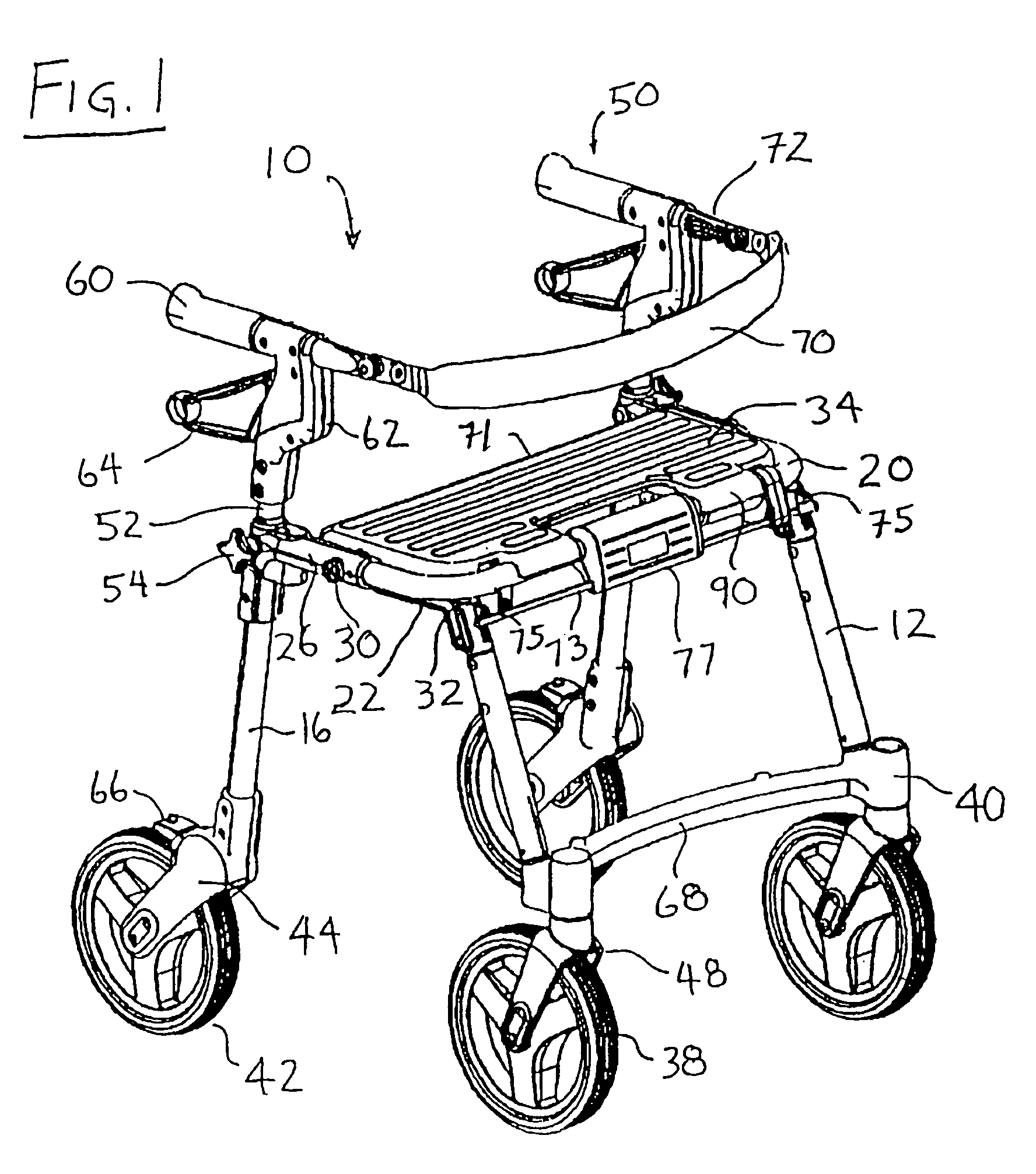Height-adjustable cordless brake
- Summary
- Abstract
- Description
- Claims
- Application Information
AI Technical Summary
Benefits of technology
Problems solved by technology
Method used
Image
Examples
Embodiment Construction
[0068]Referring to FIGS. 1 to 3, there is shown a perspective view of a rollator or walker / transport chair 10 in the walker configuration. Walker / transport chair 10 has a pair of forward leg members 12, a pair or rearward leg members 16, and a U-shaped transverse seat support member 20. Front leg members 12 are fixedly secured at their upper ends to front leg brackets 22, and rear leg members 16 are fixedly attached at their upper ends to rear leg brackets 26. Front leg brackets 22 are pivotally attached to rear leg brackets 26 at pivot pins 30. In the open or operative position shown in FIGS. 1 to 3, abutment surfaces 32 at the upper ends of front leg brackets 22 engage the forward lower edge of seat support member 20, when forward leg members 12 are in the open and weight bearing position. Front leg brackets 22 permit the front leg members 12 to be folded toward rear leg members 16 in order to collapse walker / transport chair 10 into a more compact configuration, e.g. for placement...
PUM
 Login to View More
Login to View More Abstract
Description
Claims
Application Information
 Login to View More
Login to View More - R&D
- Intellectual Property
- Life Sciences
- Materials
- Tech Scout
- Unparalleled Data Quality
- Higher Quality Content
- 60% Fewer Hallucinations
Browse by: Latest US Patents, China's latest patents, Technical Efficacy Thesaurus, Application Domain, Technology Topic, Popular Technical Reports.
© 2025 PatSnap. All rights reserved.Legal|Privacy policy|Modern Slavery Act Transparency Statement|Sitemap|About US| Contact US: help@patsnap.com



